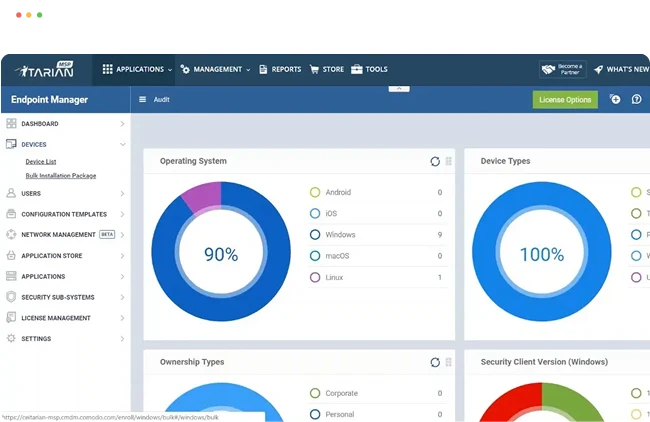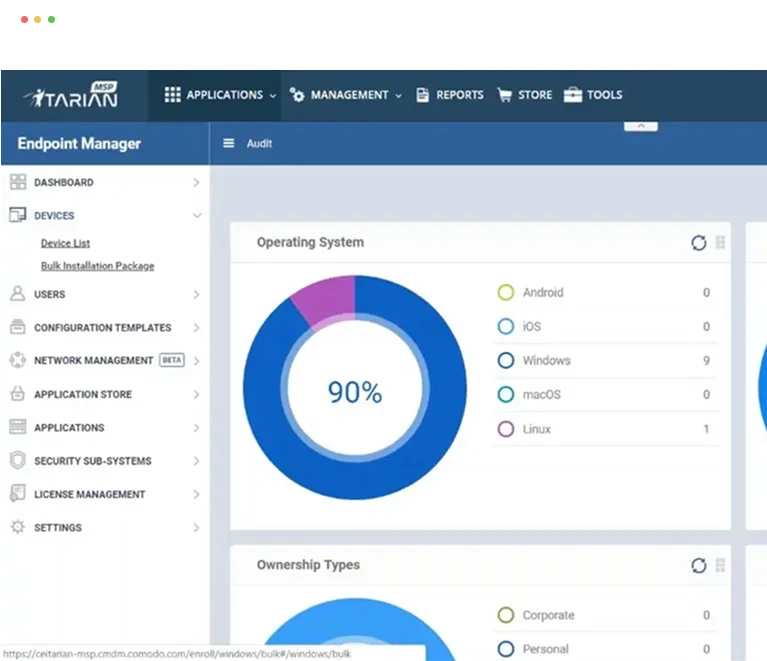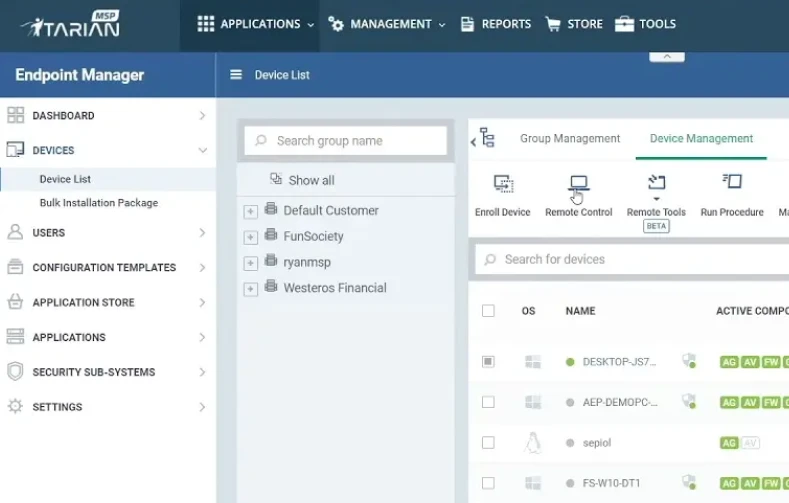Free Hosted Remote Desktop
Empower your IT team with ITarian Remote Desktop, a secure and intuitive solution for seamless remote access and support. Whether managing IT infrastructure, troubleshooting issues, or assisting users from anywhere, our remote desktop tool ensures fast, reliable, and encrypted connections to keep your operations running smoothly. With multi-platform compatibility, advanced security features, and real-time collaboration tools, ITarian Remote Desktop makes remote IT management effortless. Experience uninterrupted access and total control—all from a centralized, easy-to-use interface

Secure and High-Performance Remote Access for Every Endpoint
ITarian Remote Desktop gives IT teams the power to connect, manage, and troubleshoot any device with ease. Whether you're supporting employees, maintaining servers, or managing an entire IT infrastructure, our solution ensures fast, encrypted, and seamless remote access across all endpoints. With multi-platform compatibility, real-time collaboration tools, and enterprise-grade security, ITarian Remote Desktop simplifies IT management while keeping systems secure and efficient. Reduce downtime, boost productivity, and take control of your IT environment—anytime, anywhere.
Gain instant, secure access to remote desktops with ITarian's fast and reliable technology. Experience seamless connectivity and top-tier security for all your remote access needs.
Get Started for FreeAccess remote devices anytime, whether you're managing them unattended or on-demand. ITarian ensures smooth, secure connections for all your remote management tasks.
Get Started for FreeEasily share and control screens in real-time with ITarian's intuitive remote access tools. Collaborate instantly and efficiently with full security and control.
Get Started for FreeTrack and record remote sessions with ITarian for enhanced security and accountability. Maintain detailed logs for compliance and audit purposes.
Get Started for FreeEnhance security with ITarian's Two-Factor Authentication (2FA) for an extra layer of protection. Safeguard access with a simple, effective authentication process.
Get Started for FreeITarian offers scalable solutions designed to meet the needs of IT teams and MSPs. Easily expand your remote management capabilities as your business grows.
Get Started for Free
Free Remote Desktop for
Unlimited Administrators
ITarian Remote Desktop offers free, unlimited access for IT administrators, making it the ideal solution for businesses, IT teams, and Managed Service Providers (MSPs) looking to streamline remote support without hidden costs. Whether managing a small business or a large enterprise, you can securely connect, control, and troubleshoot any endpoint—all from a centralized, easy-to-use dashboard. With no per-user fees and enterprise-grade security, ITarian empowers IT teams to reduce downtime, enhance productivity, and provide seamless remote assistance—completely free.
Get Started for Free
